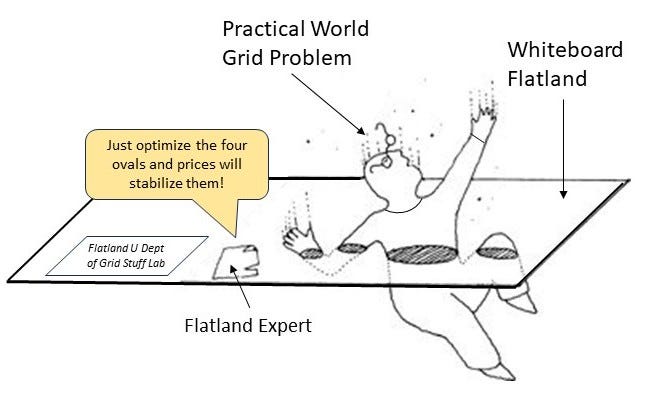In 1884 Edwin Abbott published a novella called Flatland: A Romance in Many Dimensions. It describes a world (Flatland) that exists in only two dimensions and shows how the Flatlanders could never understand our three-dimensional world and would be totally baffled by any interactions with it.
Flatland exists today on the whiteboards of the many “experts” who propose to show how the electric grid should evolve for the 21st Century. Unfortunately for the whiteboard Flatlanders, the practical world of our power systems is quite multi-dimensional and has many hills, saddlebacks, islands, terraces, valleys, basins, deltas, reefs, tombolos, inselbergs, moraines, craters, and shoals – complexities not representable or even perceivable in Flatland.
Modern day Flatlanders draw planar diagrams on their whiteboards to illustrate their plans for the grid, not realizing that the interconnected nature of the complex grid structure classes requires high-dimensional non-planar thinking. A simple example is the way that multiple DER aggregators with interpenetrated service areas and siloed asset classes are connected to the grid – none of that is represented in whiteboard Flatland models of DER coordination. It is no wonder that whiteboard Flatlanders think that two dimensional concepts like independent DSOs, distribution nodal pricing, virtual batteries, and magic optimization boxes will solve all the DER integration issues. And it is no wonder that none of that works.
The power grid does not exist in Flatland, nor can the answers on how to modernize it for the 21st Century be found there.





Jeff: loved it!! Joe